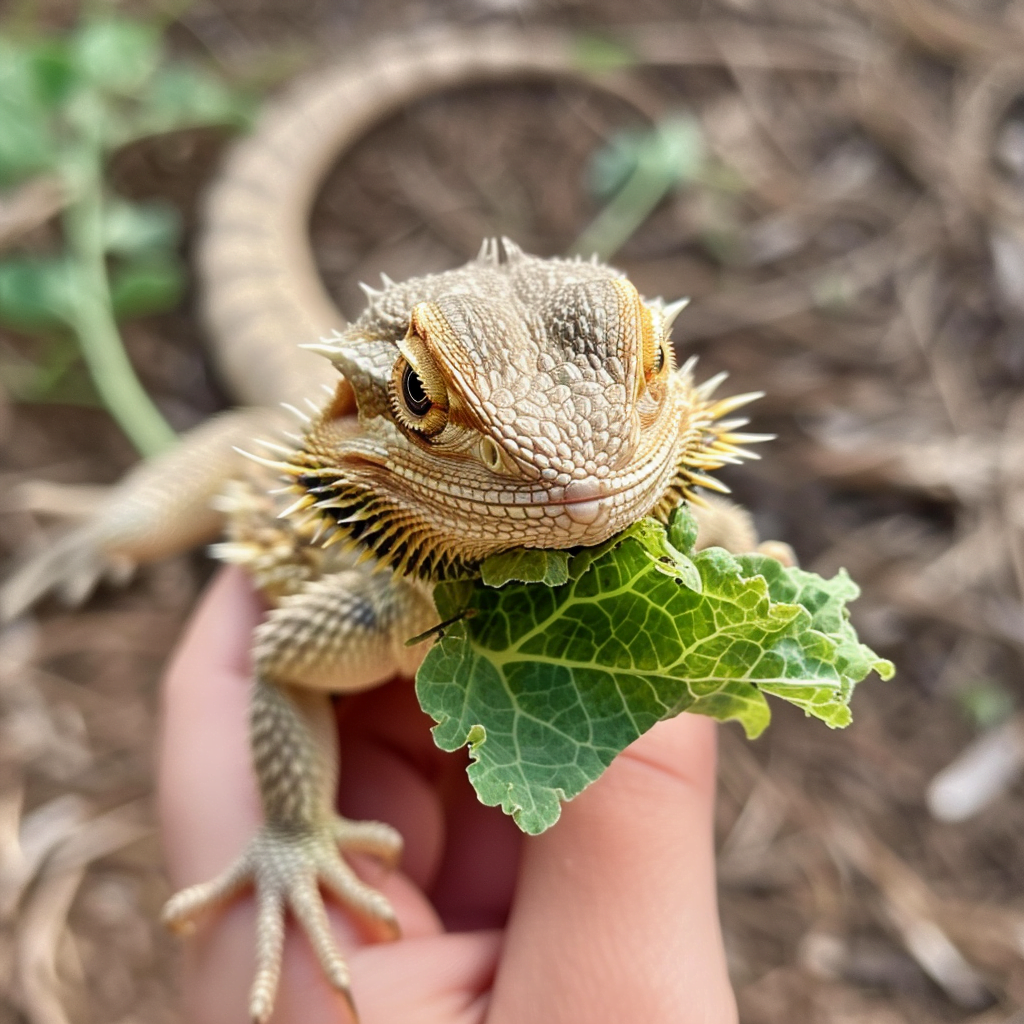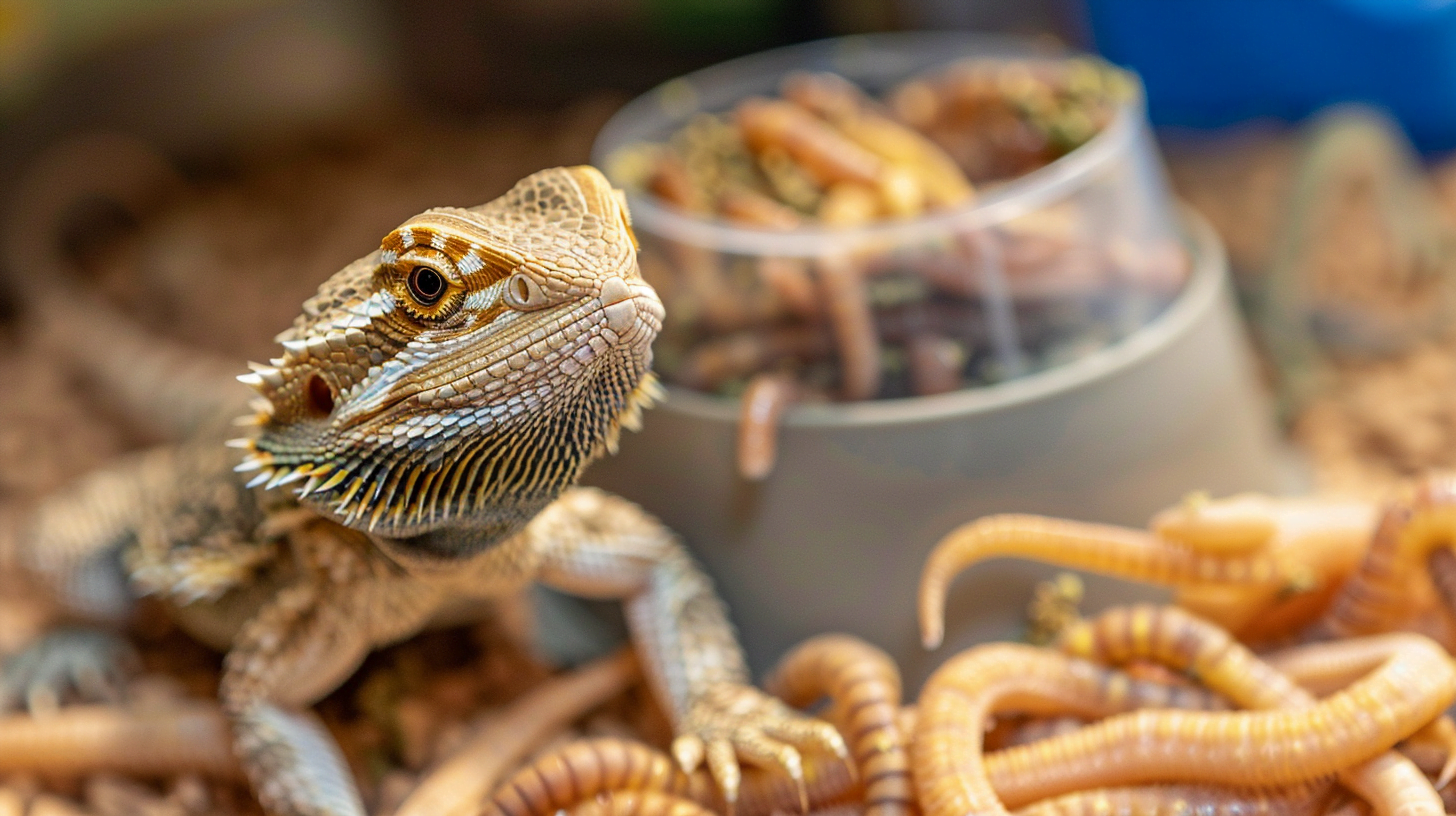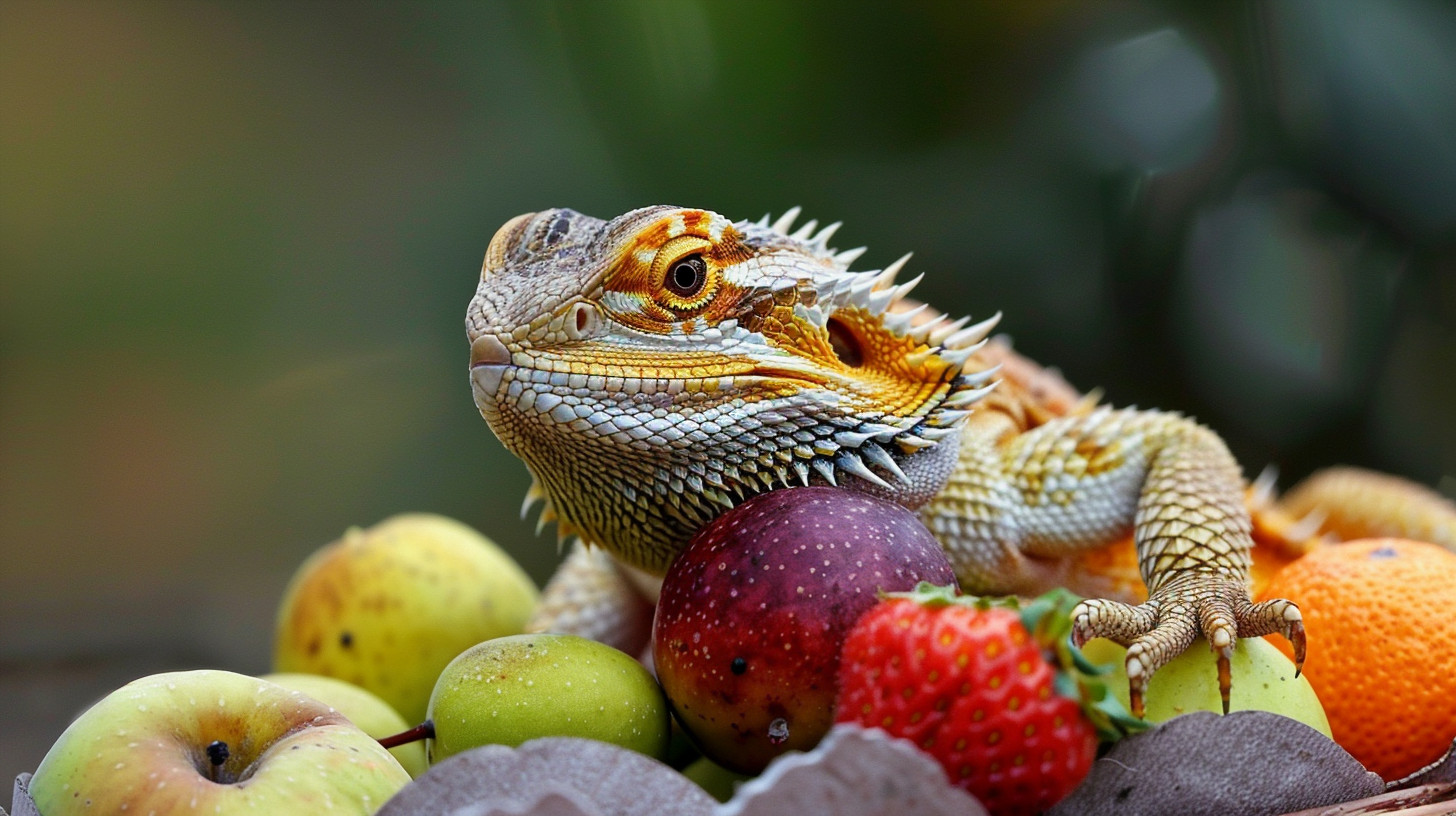Introduction
For new bearded dragon owners, one of the most common questions asked is “how often should baby bearded dragons eat?” Determining the right feeding schedule is crucial during the rapid growth phase in the first 12 months of a bearded dragon’s life. New pet owners want to ensure their juveniles get all the nutrients they need to thrive. However, some worry about under or overfeeding their rapidly growing dragons. Striking the right balance between feeding frequency, amounts, and nutrition takes attentive care and observation.
Providing proper nutrition during the baby and juvenile stages is vital to raising healthy adult bearded dragons. The goal is to facilitate fast growth and development while preventing obesity and other issues like gut impaction. During the first year, bearded dragons can grow from just 4 inches to over 18 inches in size if cared for correctly!
This comprehensive guide answers all the key questions about baby bearded dragon feeding schedules. You’ll learn exactly how often to feed beardies in their critical first year as well as how much food to provide at each meal. We’ll cover what feeder insects, vegetables, fruits, and supplements should make up their diverse diet. You’ll also find troubleshooting tips for common feeding issues in babies like appetite changes. With the proper feeding techniques and nutrition, you can ensure your juvenile bearded dragon hits growth milestones and matures into an energetic, healthy adult.
Key Factors That Impact Baby Bearded Dragon Feeding Frequency
Several key factors determine how often baby bearded dragons need to eat:
- Age – Younger dragons under 4 months need more frequent feedings, up to 5 small meals per day. As they grow, this decreases to 2-3 larger meals daily. Their digestive system and appetite mature as they age.
- Size – Larger, faster growing babies need more food than smaller juveniles. A good rule of thumb is to feed 10-15% of their body weight per day.
- Health – More active, healthy dragons need more feedings than lethargic ones. Watch for signs of illness.
- Temperature – Warmer tank temperatures between 95-110°F increase metabolism and appetite. Cooler temperatures can suppress appetite.
Monitor these factors and adjust feeding frequency and amounts accordingly. Healthy babies will eagerly consume as much nutritious food as offered. It’s generally better to feed more frequently than overload their small stomachs at one time.
Feeding Schedule Guidelines By Age
Here are the recommended feeding frequencies by age:
- 0-4 months – Eat 3-5 smaller meals per day, about the amount they can consume within 10-15 minutes. This equates to roughly 10-15% of their body weight daily.
- 4-6 months – Eat 3-4 times per day. Slowly increase portion sizes as they grow.
- 6-12 months – Eat 2-3 larger meals per day.
The exact amount at each feeding depends on the size and growth rate of the individual bearded dragon. Provide as much nutritious food as they will eat within 10-15 minutes at each feeding.
Signs your baby beardie is still hungry include:
- Actively seeking more food
- Licking lips
- Following your movements
If their appetite decreases, monitor their health closely. Lethargy and weight loss warrant an exam by a reptile vet.
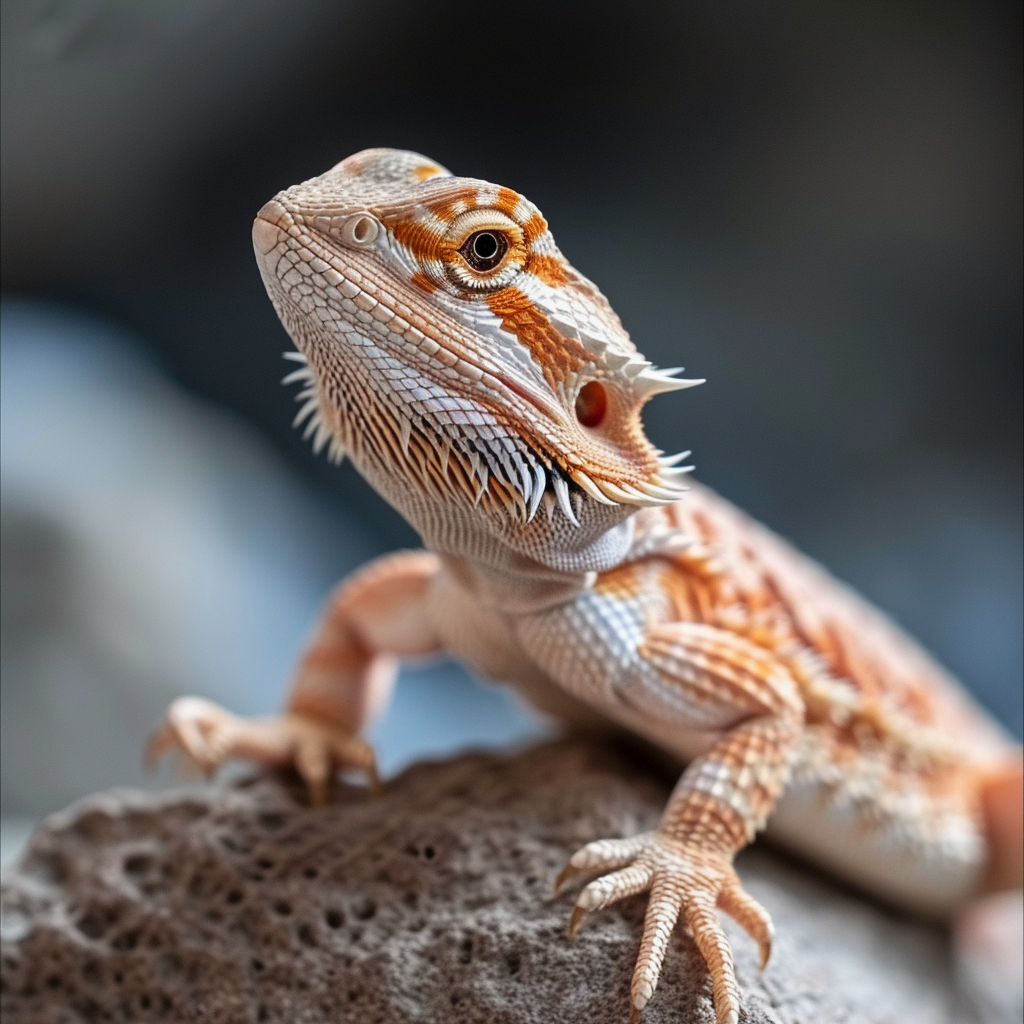
Best Diet for Optimal Baby Bearded Dragon Growth
Baby bearded dragons under 1 year should eat a balanced diet including:
- Insects – A variety of small insects should comprise 60-80% of their diet. Crickets, mealworms, waxworms, small roaches, and other feeder insects are excellent choices.
- Greens – Offer fresh greens like collard, mustard, dandelion daily. Even if uneaten at first, this establishes healthy habits. Chop greens finely to make them more palatable.
- Fruits – Some fruits can provide variety and important nutrients. Good options include blueberries, mango, strawberries.
- Supplements – Lightly coat insects in calcium supplement 1-2 times per week. Multivitamin supplement 2-3 times weekly. Avoid oversupplementing.
Insects and greens should make up the majority of their diet. Fruits are fine in moderation. Use supplements carefully to prevent toxicity.
Many owners have success feeding a slurry of greens blended with supplements to coat the insects. This encourages greens consumption.
Insects – Primary Nutrient Source
Crickets, mealworms, waxworms and small feeder roaches provide:
- Protein – Needed for muscle growth and development.
- Fat – Important energy source.
- Vitamins & minerals – Calcium, phosphorus, and more.
Offer appropriately sized feeder insects. Avoid large crickets that could bite or injure babies.
A variety of insect types provides balanced nutrition. The staple feeder should be nutrient-rich crickets or dubia roaches. Mealworms and waxworms are higher in fat, so use more sparingly.
Greens – For Fiber and Vitamins
Greens provide:
- Fiber – For healthy digestion.
- Vitamin C – Essential for immune function.
- Beta carotene – Converts to Vitamin A for eye and skin health.
- Calcium – When low in phosphorus, supports bone growth.
The best greens for bearded dragons include:
- Collard
- Mustard
- Dandelion
- Endive
- Escarole
- Turnip and beet greens
Chop greens finely to make them more palatable for babies. Offer fresh daily, even if they don’t eat it. This establishes healthy habits.
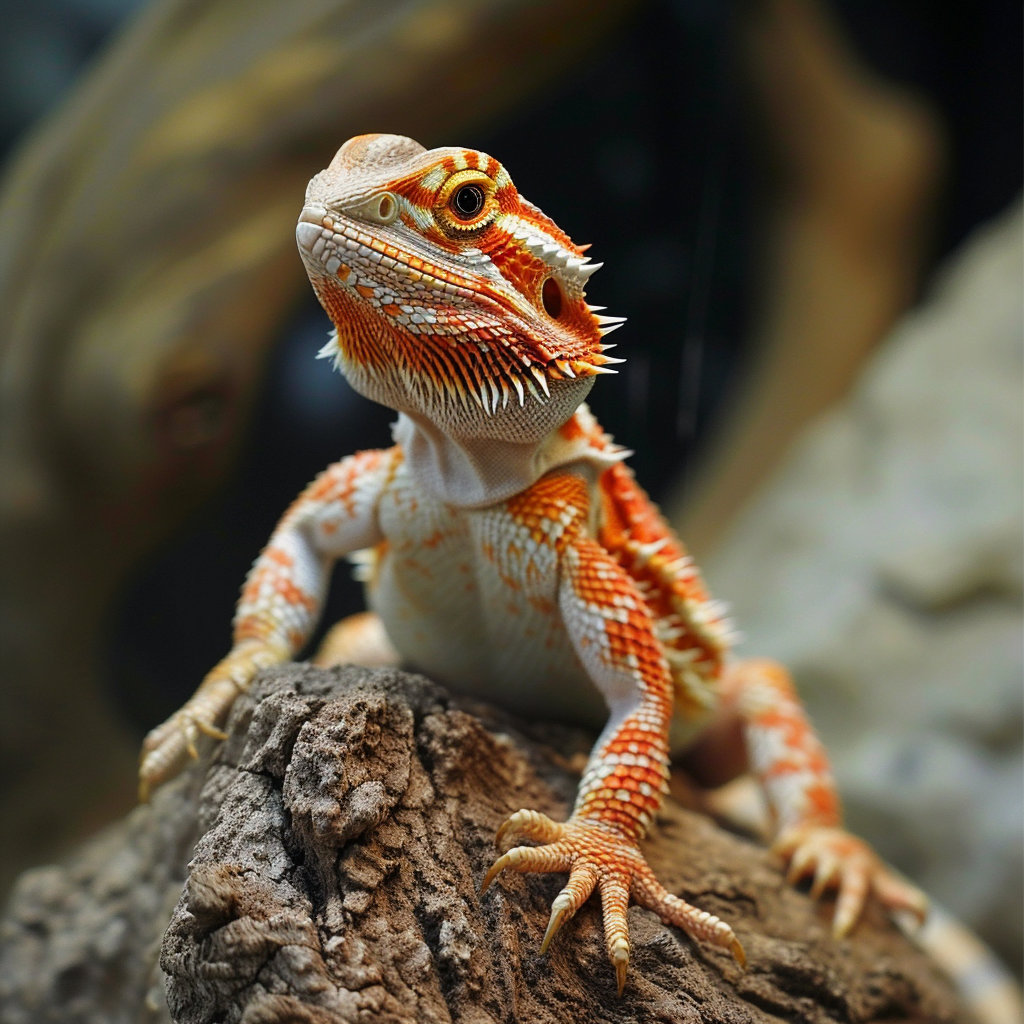
Fruits – Natural Sugars in Moderation
Fruits are high in sugars, so feed in moderation. Good options include:
- Blueberries
- Strawberries
- Mango
- Melon
- Banana (small amount)
Fruits provide:
- Vitamin C
- Beta carotene
- Fluids
- Potassium
Limit fruit to 1-2 times per week. Only about 10% of their diet. Too much can cause diarrhea.
Supplements – Calcium & Vitamins
Completing the diet with supplements 2-3 times a week is important, but avoid overdoing it.
Lightly coat feeder insects with:
- Calcium supplement – 1-2 times weekly
- Multivitamin supplement – 2-3 times weekly
Alternatively, blend into “salad dressing” to coat greens. Rotating supplements prevents overdose on any one nutrient.
Feeding Techniques for Baby Bearded Dragon Success
Follow these tips for easy, nutritious feedings:
- Use shallow dishes for insects – easier for babies to catch.
- Remove uneaten insects within 15 minutes – they will bite your beardie.
- Chop and blend greens to increase palatability.
- Hand feed tamer babies for better bonding.
- Observe poop – abnormal feces can signify issues.
- Try different vegetables to find favorites.
- Lightly dust crickets with supplements using plastic bag.
- Feed earlier in the day – allows time to digest before night.
- Wash hands before and after feeding.
Pay attention to your baby dragon’s growth and behaviors. Healthy babies should eagerly consume as much nutritious food as offered at each feeding. Adjust amounts and frequency based on appetite and weight gain.
Consult a reptile vet if you have any concerns about development, energy level, or digestion. Proper nutrition is vital for your baby bearded dragon’s health and growth.
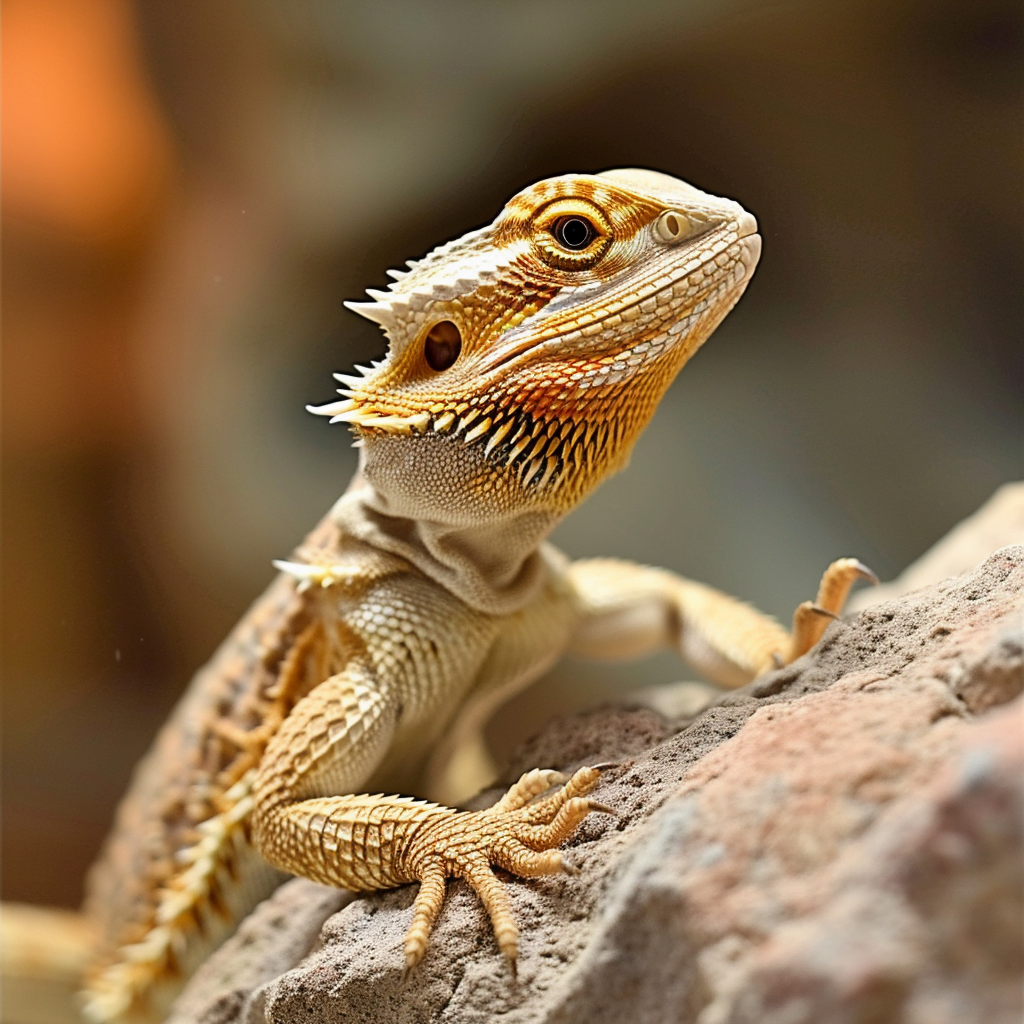
Common Baby Bearded Dragon Feeding Problems
Here are some common feeding issues seen in baby bearded dragons:
Problem: Disinterest in greens or vegetables.
Solution: Keep offering daily. Blend greens into slurries to increase interest. Introduce new veggies like bell pepper, endive, escarole.
Problem: Disinterest in insects or overall appetite loss.
Solution: Monitor temperatures – ensure basking area is 95-110°F. Make sure proper UVB lighting. Have a reptile vet examine health.
Problem: Constipation or passing urates in feces.
Solution: Increase hydration. Mist greens and add water to blended diets. Provide warm baths. Add prune or apple juice to water. See a vet if persists.
Problem: Loose stool or diarrhea after eating certain foods.
Solution: Avoid overfeeding high sugar fruits. Eliminate any new foods that cause diarrhea. Encourage more greens in diet. See a vet if persists longer than 2 days.
Transitioning Juveniles to an Adult Diet
Around 12 months old, baby bearded dragons transition to an adult diet:
- Insects become less critical – shift toward more vegetable-based nutrition.
- Greens intake should increase to about 60-80% of total diet.
- Fruits can be reduced further or eliminated completely.
- Protein needs decrease as growth rate slows.
Transition gradually over 2-4 months. Slowly shift proportions as appetite for greens increases. Monitor weight and energy levels.
By 18 months old, juvenile bearded dragons should be fully transitioned to an adult diet with greens as the staple and insects offered just 2-3 times per week as treats.
Conclusion
Proper nutrition is essential for raising healthy, thriving baby bearded dragons. With the right feeding techniques and diet proportions, your juvenile dragon will grow rapidly in their first year.
Key takeaways:
- Feed babies 3-5 times daily when young, decreasing to 2-3 times per day.
- Offer as much insect and vegetable matter as they will eat in 10-15 minutes.
- Insects provide protein for growth; greens offer fiber, vitamins and minerals.
- Lightly coat insects in supplements 1-2 times per week.
- Adjust schedule and amounts based on appetite and growth.
